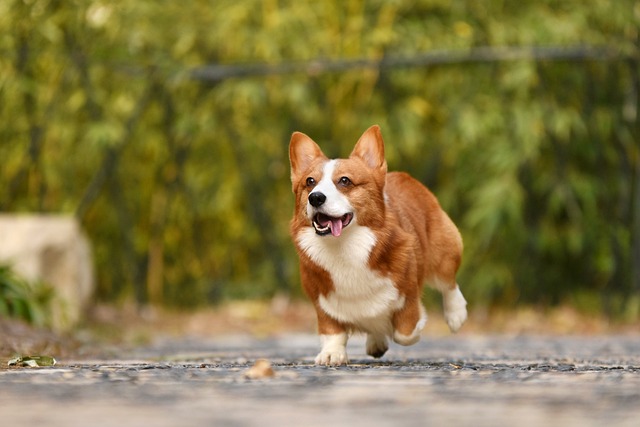
How can I tell if my dog's heatstroke is serious
Let’s be real: It’s a sticky August morning in Los Angeles, and you took your 2-year-old Golden Retriever, Max, for a walk a little later than usual
If you’re a new dog parent in the US—maybe you’re cleaning up another loose stool from your 7-month-old Poodle mix, Bella, in your Brooklyn apartment, or you’ve noticed she’s been vomiting up her kibble and hiding under the couch—you’ve probably felt stuck: How do I fix her upset stomach? Will she ever eat normally again? Resetting your dog’s digestive system isn’t about fancy meds—it’s about giving their gut a gentle break and slowly rebuilding balance. Let’s break this down so you can help Bella feel better fast.
First, let’s keep the science simple: A dog’s digestive system is full of “good bacteria” that break down food and keep things running smoothly. When something throws that off—like eating a handful of table scraps, switching food too fast, or even stress from a new apartment—the “bad bacteria” take over, causing diarrhea, vomiting, or loss of appetite. Resetting means calming irritation first, then gradually reintroducing food to let the good bacteria bounce back. My friend Maria in Texas learned this with her 2-year-old Beagle, Cooper: He got into a bag of chocolate chip cookies (never leave those out!) and had diarrhea for two days. A gentle reset—no food for 12 hours, then small servings of boiled chicken—had him back to begging for treats in 48 hours.
Here’s how to reset your dog’s digestive system, step by step: Start with a “gut break”—skip solid food for 12–24 hours (but always offer small sips of water to keep them hydrated; dehydration is a big risk!). For apartment living, keep their water bowl near their bed so they don’t have to move much if they’re tired. After the break, give tiny portions of a bland, easy-to-digest meal: boiled chicken (no salt!) and plain white rice (1 part chicken to 2 parts rice). Start with ¼ cup for small dogs or ½ cup for medium dogs, twice a day. If they keep that down for 24 hours, slowly mix in their regular kibble (25% kibble, 75% bland food) for a day, then 50/50, then 75/25—this lets their gut adjust. Use positive reinforcement to encourage eating: Set the bowl down, say “good eat!” in a calm voice, and give a tiny scratch behind the ears if they take a bite. Never force food or scold them for not eating—punishment goes against US animal welfare norms and makes stress worse, which slows recovery.

Now, let’s tie in rules and habits that matter. Every US state requires core vaccines (distemper, parvovirus)—parvovirus causes severe digestive issues that mimic a “stomach bug,” so if your dog is unvaccinated or shows signs like bloody diarrhea, call the vet immediately. Skipping vaccines could get you fined $150+ in California or New York, and parvovirus is life-threatening if untreated. When you take them outside for potty breaks during the reset, always clean up their poop—cities from Seattle to Boston fine up to $300 for leaving waste, and checking their stool (firmness, color) is how you’ll know the reset is working. For apartment living, avoid giving them toys with small parts (they might swallow them, causing blockages) and keep human food out of reach. At the dog park, don’t let them eat grass or dirt (common gut irritants)—redirect with a toy and praise them for playing instead.
Resetting your dog’s digestive system takes patience, but most pups bounce back in 2–3 days. Before you know it, Bella will be eating her regular food again and having normal poops—no more stress for either of you. Remember: If symptoms last more than 48 hours (or get worse), call your vet—better safe than sorry when it comes to their gut health.

Let’s be real: It’s a sticky August morning in Los Angeles, and you took your 2-year-old Golden Retriever, Max, for a walk a little later than usual

You're enjoying a summer afternoon at the park when you notice your dog has stopped panting and appears disoriented - their gums are bright red

Let’s paint the picture: You’re in your Denver apartment, watching your 4-year-old Boston Terrier, Ruby, plop down mid-play session with her favorite toy

Many dog owners notice their pets nails seem shorter after regular walks,but how much does this daily activity actually help?The answer depends on where you walk—concrete sidewalks or asphalt streets gently file nails as a dog's paws hit the ground

Most dog owners notice their pup scooting across the carpet at some point, but few connect it to impacted anal glands. These small sacs near a dog’s rectum secrete a scent for marking territory

Most vets agree that regular dog teeth cleaning is key to avoiding painful dental issues later. For healthy adult dogs, a professional cleaning at the vet’s office every 12 to 18 months usually works well.